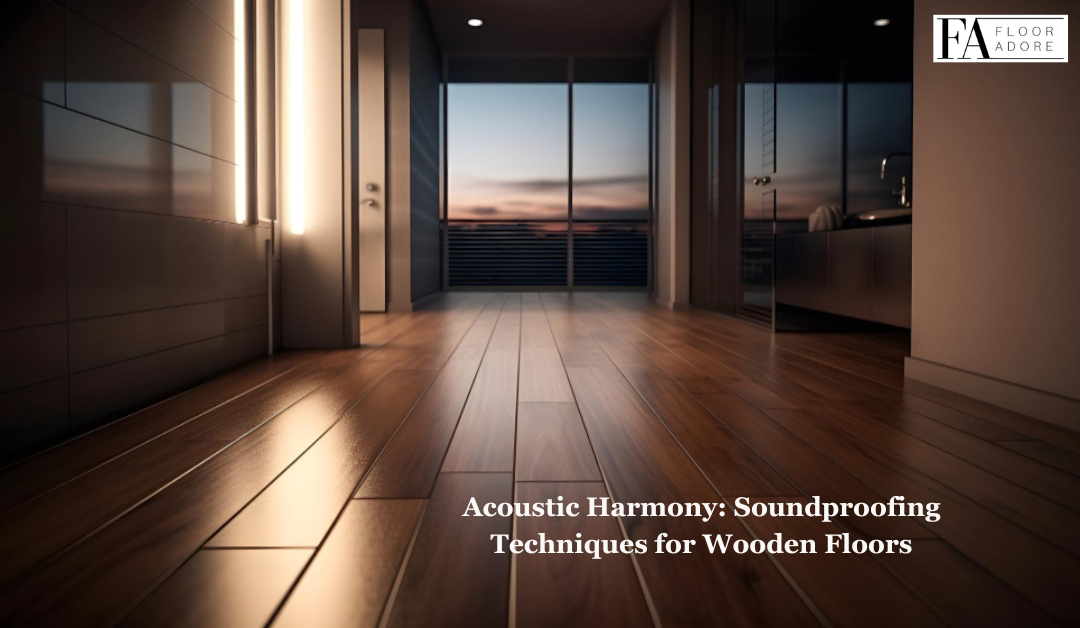Wooden floors add warmth, beauty, and sophistication to any space, but they can also present challenges when it comes to sound transmission. Footsteps, furniture movement, and other noises can reverberate through wooden floors, causing disruptions and reducing comfort levels. However, with the right soundproofing techniques, you can achieve acoustic harmony and enjoy the benefits of wooden flooring without the drawbacks. In this article, we will explore effective soundproofing techniques for wooden floors to create a quieter and more peaceful environment.
Underlayment Solutions:
One of the most effective ways to reduce sound transmission through wooden floors is by installing an underlayment. Underlayment materials such as cork, rubber, or foam provide a cushioning layer between the subfloor and the wooden flooring, absorbing impact noise and reducing vibrations. Cork underlayment, in particular, is prized for its excellent sound-absorbing properties and environmental sustainability. Installing underlayment can significantly improve the acoustics of a room and enhance the overall comfort.
Floating Floor Installation:
Floating floor installation is another soundproofing technique that can help minimize noise transmission on wooden floors. In a floating floor system, individual planks or tiles are not directly attached to the subfloor but instead are laid over an underlayment or a moisture barrier. This separation creates an air gap that helps dampen sound vibrations and reduces impact noise. Floating floors are particularly effective in multi-story buildings where sound transmission between floors is a concern.
Fill Gaps and Cracks:
Gaps and cracks in wooden floors can act as pathways for sound to travel through, compromising the effectiveness of soundproofing measures. It’s essential to fill any gaps or cracks between floorboards with an appropriate filler material to prevent sound leakage. Wood filler or acoustic sealant can be used to seal gaps and cracks effectively, creating a tighter seal and reducing sound transmission.
Area Rugs and Carpets:
Strategic placement of area rugs and carpets can help absorb sound and reduce noise levels in rooms with wooden floors. Placing area rugs in high-traffic areas, such as living rooms or hallways, can help dampen footsteps and minimize sound reverberation. Additionally, thick-pile rugs and carpets with a dense underpad provide better sound-absorbing properties and can significantly improve the acoustics of a room.
Acoustic Panels and Wall Treatments:
In addition to addressing sound transmission through the floor, it’s essential to consider other surfaces in the room that can contribute to noise pollution. Installing acoustic panels or sound-absorbing wall treatments can help minimize sound reflections and improve overall sound quality. Acoustic panels come in a variety of materials, including fabric-wrapped panels, foam panels, and decorative wall tiles, allowing you to customize the look of your space while enhancing acoustic performance.
Proper Floor Maintenance:
Regular maintenance of wooden floors is crucial for preserving their soundproofing properties and ensuring optimal performance. Keep floors clean and free of debris to prevent unnecessary noise caused by friction between objects and the floor surface. Additionally, addressing any squeaks or creaks promptly can help maintain a quieter and more comfortable environment.
Conclusion:
Achieving acoustic harmony in rooms with wooden floors requires a combination of soundproofing techniques and thoughtful design considerations. By incorporating underlayment solutions, floating floor installation, filling gaps and cracks, strategically placing area rugs and carpets, installing acoustic panels, and maintaining proper floor care, you can create a quieter and more peaceful environment while enjoying the beauty and elegance of wooden flooring. With careful planning and attention to detail, you can achieve the perfect balance of aesthetics and acoustics in your space.





